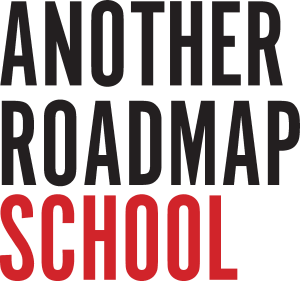When the project
“
Letters to/from Cairo, Dehli, Gwangju/Cologne, Johannesburg & Richmond: Letter writing as a technology of the past present and futures”
started, the method was a meditation on
“
Fantasy, Thought, Feeling and Speculation as Action” through a set/suite of questions, prompts and propositions:
-
How do we, in the year 2020/10 or whenever think of letter writing as a technology of the past present and futures?
-
How does it look, feel, and dream like to write letters to the past, present and future?
-
Can letter writing be read as a technology of waiting – waiting as technology of speculation?
-
This is to say, while waiting for the reply, or even for the ‘letter’ to reach recipients – if it does at all (no blue ticks) – we could speculate.
-
We don’t only speculate in the mind that wanders/loiters or the heart that yearns and anticipates, but also speculate through translations that invites expansive responses – acts of/in Sebakanyana, Solanka, In The Mean
time
.
-
In a hyper-capitalist world of un/paid labour, AI-robotic labour and rising ‘unemployment’, can ‘we’ conceive of waiting as a productive act?
-
If we dare to conceive such, what are the ethico-political consequences/implications of such a thought act?
-
Can we write letters to the Moon, Venus, Jupiter – Earth, for the Sebakanyana, Solanka, In The Mean
time
?
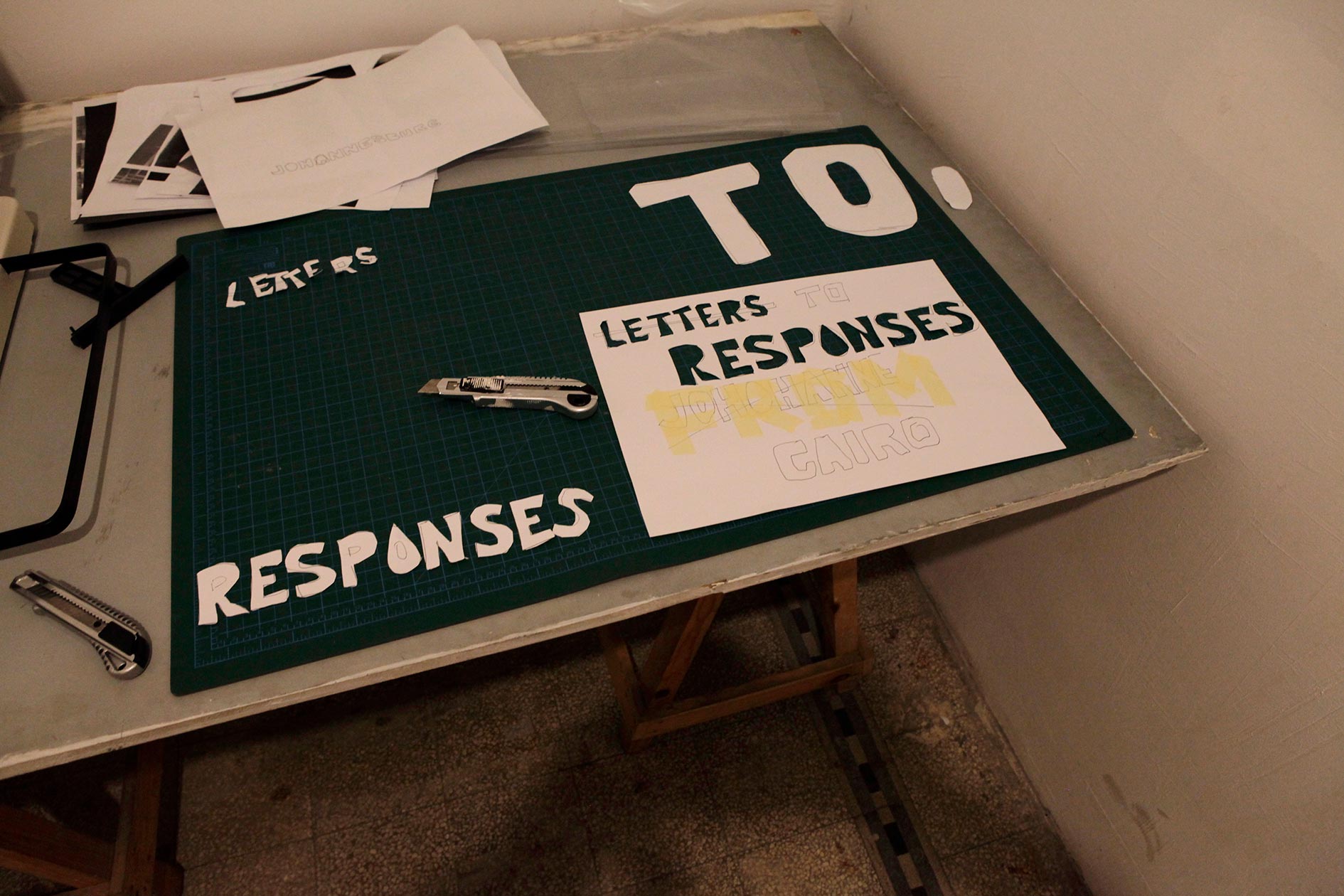
The first call and response in this letter writing began in Johannesburg to Cairo and back to Johannesburg. Poetically, all things considered, it is significant that the very first letters were carried by Rangoato Hlasane (member of Another Roadmap Africa Cluster, Wits School of Arts and Keleketla! Library) to visit the Contemporary Image Collective at the invitation of the Temporary Gathering collective from 10 to 15 March 2020. The embodied mediation deepened the notion of letter writing in practice at the cusp of social distancing. At Temporary Gathering, Rangoato co-led a workshop and mediation on letter writing, as well as deliver a lecture on “post-Apartheid” South Africa’s vernacular visual cultures through the lens of kwaito music videos and their articulation of race, gender and nationalism. The lecture was also part of a ‘print party’ in which all participants continued printing, making and remixing letters to Johannesburg, and of course, as per the tradition of ARAC, taking turns at the mixing desk sharing playlists, dancing together, a volume .0 of ‘People Who Think Together Dance Together’. Throughout what was then unbeknownst to us all the last day of such kind of social/intellectual gatherings, participants made stencils and screens, printing onto a collective banner of a letter. The aim was that this banner will continue to evolve on arrival in Johannesburg…
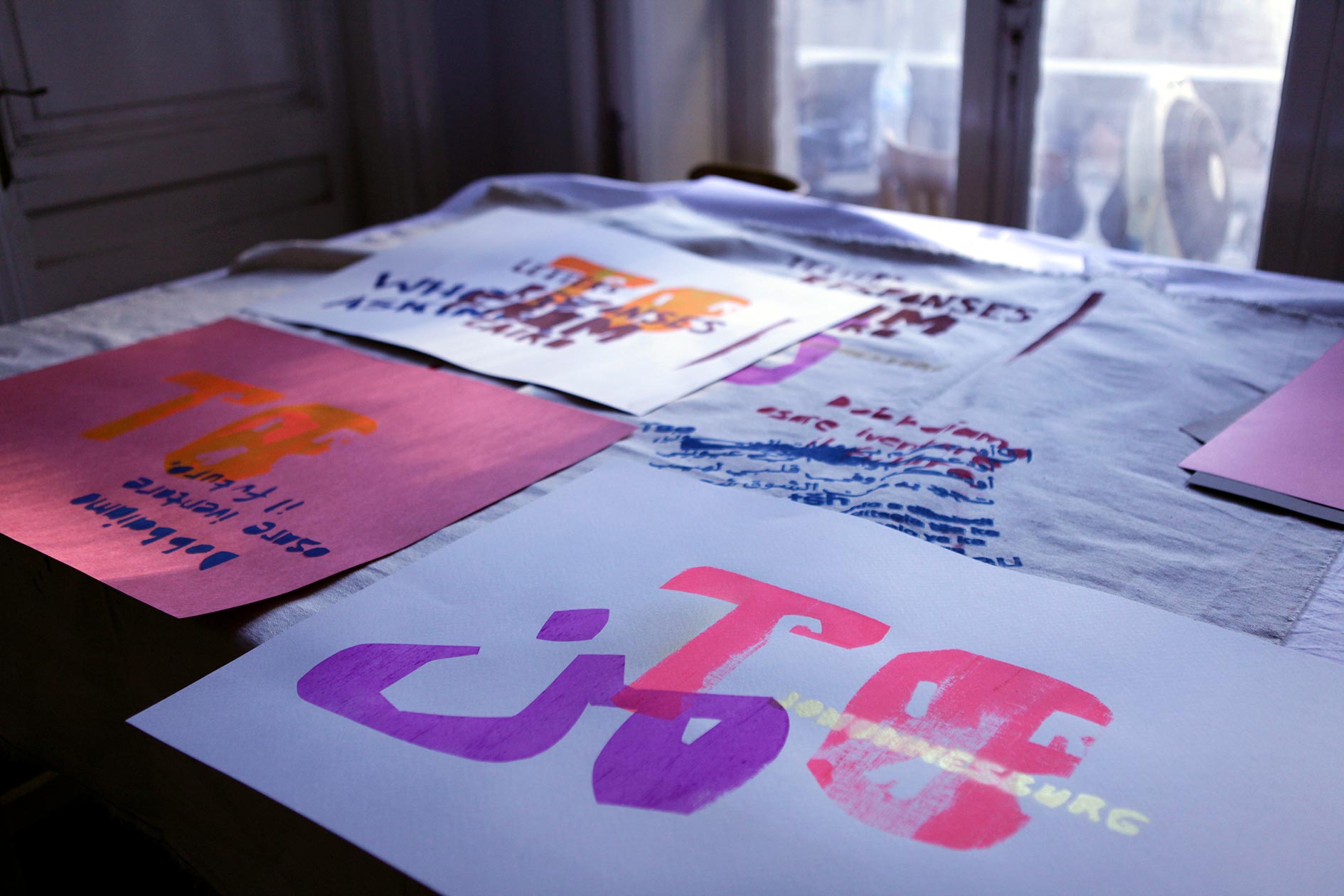
What is striking is that all the Letters/Responses to/from Johannesburg/Cairo do not engage Covid-19. Rather the Letters/Responses grapple with the tensions, contradictions, ironies and pleasures of correspondence, and serve as a portal to share thoughts and experiences that remain consistent with our time. These include, but are not limited to; intersections of language and race, complexities surrounding biographies and geographies, fault lines of nation-states and citizenship, identity and collective universalism. As the letters to Cairo were welcomed and engaged in Cairo, in Johannesburg the cohort in Drawing and Contemporary Practice III students at Wits School of Arts (University of the Witwatersrand) have turned their horizons towards Dehli, where ongoing protests were unfolding…
Within a few weeks of this seemingly unusual call and response engagement, the planetary universe came to a grip due to the Covid-19. For Rangoato, to travel back home on the day when our country’s president was to address the nation for the first time on Covid-19 and to announce a ‘state of disaster’ was surreal: “I couldn’t access the Cairo Airport Wi-Fi, so there I was with a mask on, Letters to Johannesburg in my carry on luggage, speculating on the president’s speech that took place two hours before boarding… everything was a blurr.”
He arrived to a 14-day self-isolation, including the letters. By the time the letters had reached their own quarantine period, a date for South Africa’s hard national lockdown was announced. While the students had access to photographs of the letters, it became clear that the Letters/Response from Cairo will introduce a level of depth and intensity that none of us could have imagined. The novelty of a ‘letter’ had temporally re-surfaced. The invitation of
“
Fantasy, Thought, Feeling and Speculation as Action” became charged. Currently, the Drawing and Contemporary Practice III cohort is currently ‘packaging’ Letters/Responses to Cairo, as well as Dehli, Gwangju/Cologne and Virginia, and other geographies…
a new Instagram will announce forthcoming blog and the continuing correspondences.
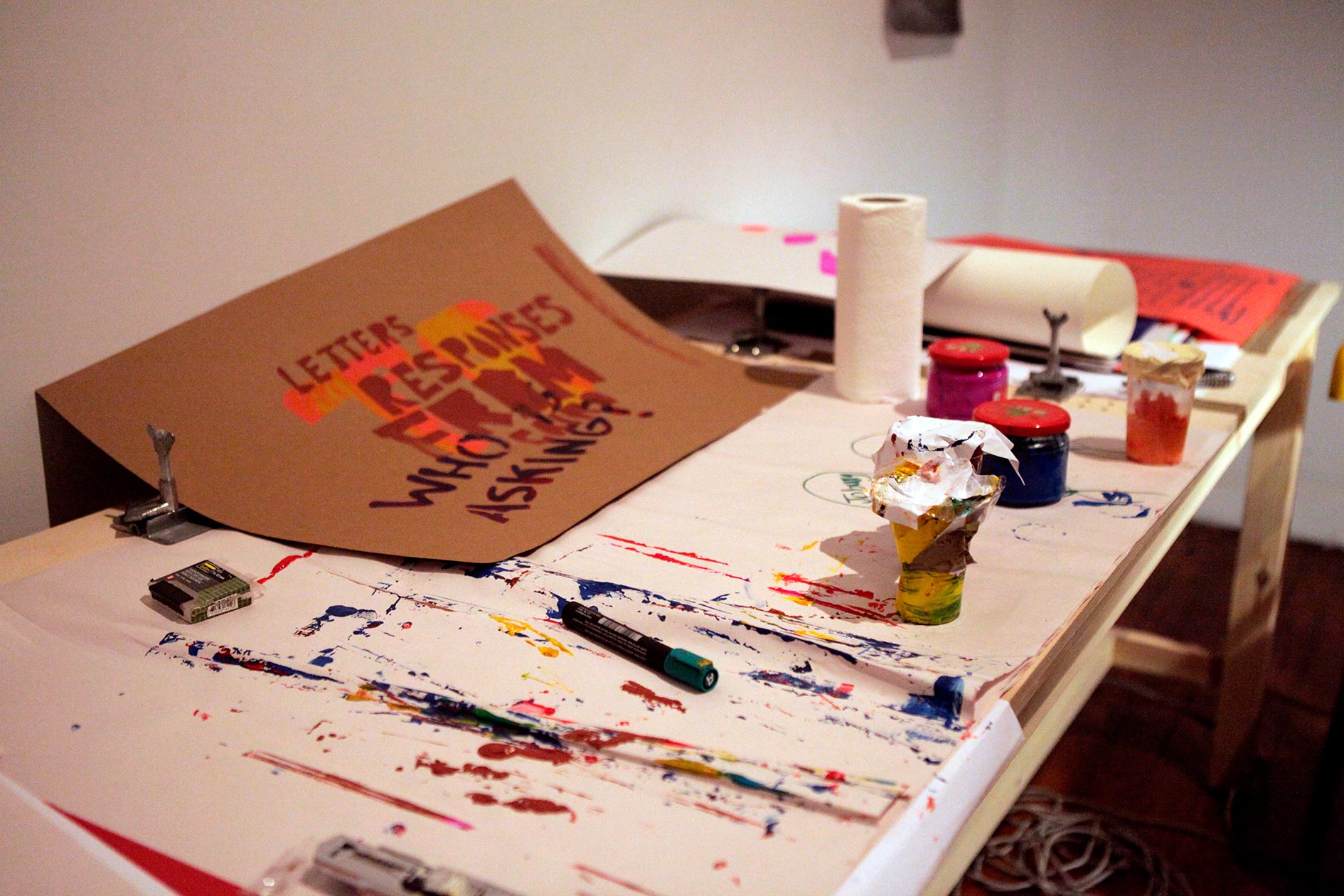
At the beginning, on method, we wrote, and we quote in full:
While we will not do away with the Internet and in person exchanges, we aim to underwrite the exchanges through postal correspondence. Thinking with the Otolith Group’s ‘In the Year of the Quiet Sun’, how do we read the graphics of/on postal stamps as miniature posters? We are reading postage stamp marks as signifiers of where objects have been, as additive layers. How do we read postal stamps as documents of historical, social, mineralogical and epistemic spaces in times and spaces?
We are intrigued by the intrigue generated by something that has to be opened. How do we think of the reader as co-author from not only the point of opening (the ‘letter’ or object/parcel), but also from the space of anticipation/speculation? We are fascinated by the possibility of objects changing in transit. Not only in terms of the eventual change in the shape and form of the object, but also through being stunted in time – the situations and conditions that rendered the ‘letter’ relevant at the time of writing may have changed at the time of departure, during transit and at the time of arrival/reception. These changes may be geological, social, political, personal etc.
While not doing away with English, we wish to complicate the desire and habit of reverting to mono-lingualism (or oppressive bi-lingualism as reflected in the Suid/South Africa postage stamp). This way we can open space to visual, the oral/aural, the mathematical, the comical, the diagrammatical, the chemical etc and to speculate, re-search, re-discover and hopefully re-engage.
Much of what was assumed above changed drastically, yet much remains the same and ‘new’ practices experiences emerged almost immediately, and continues. For example, colleagues at Ambekdar Univeristy Dehli turned inward in their letter writing. Disrupted by the pandemic, lockdown and online learning, the cohort in the MA Visual Art at School of Culture and Creative Expression write letters to each other and to a wide range of phenomena. As they write in their beautiful online manifestation (part of their graduation web exhibition), letter writing became a “
a sense of communion” and led to “a collection of love letters to each other”. For course leaders Santosh S and Vidya Shivadas “The question of address also changed—distance, proximity, and duration took on new meanings as did the terms friends and strangers.” While the digital collection of letters evoke a sense of tactility, S and Shivadas point to the provisionality of the medium as an apt “testament to our historical present”. Visit their
MA Visual Art exhibition
and their Letters Project
here.
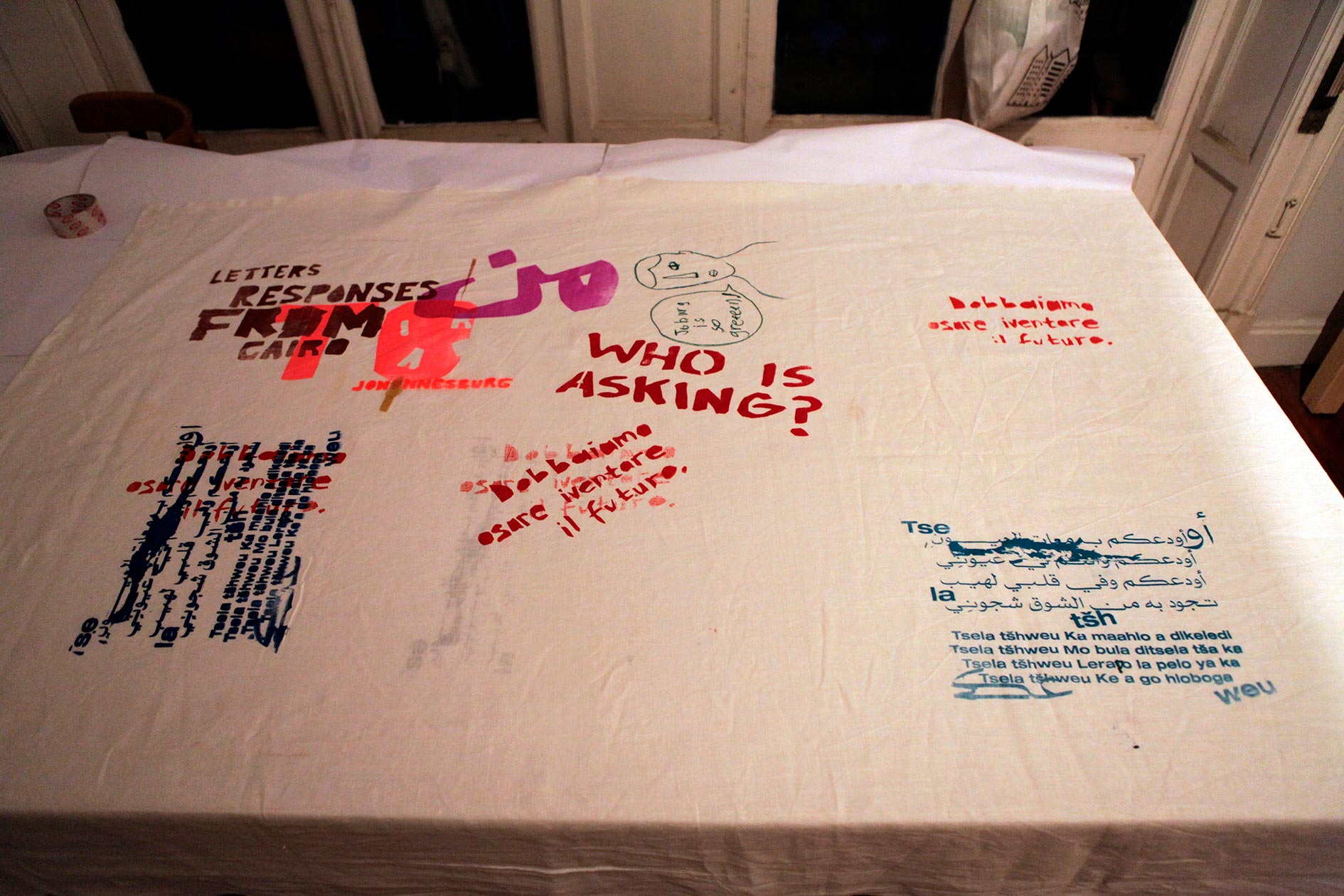
As the title indicates with reference to correspondences to/from
Cairo, Dehli, Gwangju/Cologne, Johannesburg & Richmond
the engagement continues with various intensities and tempos. We look forward to share more on this blog as the correspondences unfold. Indeed, the project’s ambition is to engage with colleagues in Entebbe and Lubumbashi. This project has been and continues to be a significant exercise in temporalities and continuities, so it will continue to be defined by starts and stops; waitings and speculations; arrivals and departures; all bounded by contexts and localities. The letter-writing in the expanded sense premise owes much of its genesis in one of the thematic threads of the Intertwining Histories Cluster of Another Roadmap School (and shout out to the London Working Group in introducing the notion of a ‘Letter to a Future Self’) and practices of the Medu Art Ensemble as revisited by the Another Roadmap Africa Cluster.
– – –
About the 2020 Drawing and Contemporary Practice III
The 2020 Drawing and Contemporary Practice III cohort at Wits School of Arts have been operating as an umbrella of ephemeral collectives, namely: 15172264, Are We Safe, Assume Form, Bayazi, Nagaram, Open Questions, RE: Write and SONA. This umbrella has now given rise to four Fronts, in the light of continuing Covid-19 restrictions namely; Editorial Front, Graphic Front, Digital Pre-Production & Online Space Front and RISOgraph & Bookmaking Front.
The collectives are responding to a constellation of invitations, prompts and provocations under the thematic:
Letter writing as a technology of the past present and futures.
With colleagues in different parts of the globe, the collectives have been writing letters to, and hopefully receiving responses from
Cairo, Dehli, Gwangju/Cologne & Richmond.
While different groups are engaging specific topics and investigations, each group is engaging letter writing as a process of pulling together
c
ollective editorial frameworks/questions and sub-questions therein towards publications in the second semester (2nd half of 2020). Each collective’s letter writing exercise serves as beginnings of editorial frameworks/propositions/questions. Each collective is, at the time of writing this, engaging in rigorous editorial processes to contribute to a collective publication, unpacking, expanding and exploring key aspects emerging from the ongoing letters and inviting further exchanges in the process.
– – –
About Temporary Gathering
Temporary Gathering is an educational programme on the history and practice of self-organised forms of publishing organised and taking place at Contemporary Image Collective – CIC in Cairo, Egypt. The programme brings together a group of 10-14 cultural workers with backgrounds in graphic design, photography, cultural theory, poetry, dance and visual arts.
Temporary Gathering consists of group based research and critical discussion of local histories and contemporary practices of self publishing and of making publications by use of affordable means, such as photocopied zines and silkscreen printing. Temporary Gathering is trying to build a context for learning from and through forms of working together collectively and tries to reflect on the role of often dissident, ephemeral and marginal forms of expression in our specific time and place and the related economies and socialities.
Temporary Gathering is interested in learning from each other and trying to develop forms of knowledge exchange through a combination of organised week long workshops facilitated by invited guests and the availability of time and resources for participants to develop, organise or facilitate part of the programme.
Temporary Gathering was initially planned for 8 weeks starting in late January this year. After an interruption in March due to the pandemic, the group continued to gather online for a couple of months and most recently more and more in the space again to print the various projects. In July, the group also decided to build two working groups, one working on documenting and the other on public events that speak to the questions, discussions and print productions made as part of the Temporary Gathering.
